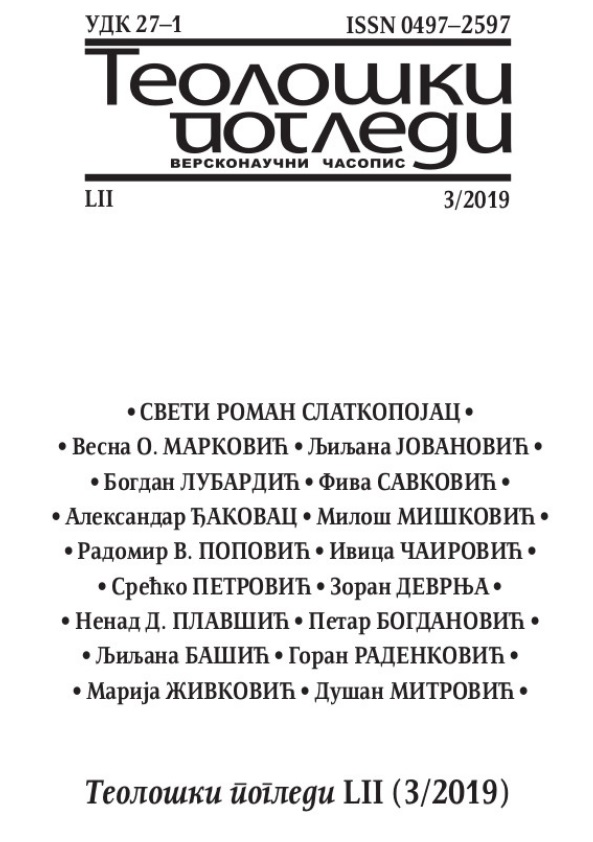„Лазаре, изађи напоље!“: Eгзегетичкo-oмилитичке рефлексије о превладавању смрти у Еванђељу по Јовану 11, 1–46
“Lazarus, come out!”: Exegetical-Homiletic Reflections on the Overcoming of Death in John 11, 1–46
Author(s): Bogdan LubardićSubject(s): Christian Theology and Religion, Eastern Orthodoxy
Published by: Свети Архијерејски Синод
Keywords: rising of Lazarus; overcoming death; Мartha and Mary; repentance; confession of faith; renewal in Jesus Christ; thanksgiving supper; eucharistic gathering; forevisions of the Kingdom
Summary/Abstract: The author undertakes an exegetic-homiletic interpretation of the narrative about Lazarus according to the Gospel of John. The identification, analysis and understanding of crucial aspects of the section under consideration is enabled by the application of the combined exegetical method of four senses deposited in the NT text (verbal-historical, allegorical-typological, moral-tropological, and anagogical-spiritual), aided by an implementation of an intertextual and intertestamental contextual approach, and, by the presupposition that it is the Eucharistic telōs, ultimately, that determines the constitution of the New Israel (as the Church) in Jesus as Christ, eschatologically regarded (Rev. 4, 9; 7, 12). The Eucharistic telōs is presupposed according to one of the magisterial lines of reading the NT as given by the tradition of the Orthodox church fathers. After a series of exegetical reflections (intoned existentially and spiritually) the author presents four special messages of the respective section, viz. Јn. 11, 1–46 and 12, 1–3. Firstly, radical repentance and confession of faith in love stating that Jesus is the Christ, and Son of the living God, opens Jesus’ divine action which restores the human person and human community. Secondly, the goal of Jesus’ activity is to call, gather and cure the people of God, the New Israel, and to embrace his sheep around himself as the Sheppard who keeps, proclaims and implements the will of his Father. Thirdly, the Eucharistic character of the newly established community is implied by the gathering of the faithful in a thanksgiving service (eucharistia) to Jesus as the Son of God and Saviour. This is conducted through the supper in Bethany as well, symbolizing (albeit in rudimentary form) the Eucharist. Fourthly, the author demonstrates how John allows us to discern three essential aspects of Jesus as a person: (1) He is God — Jesus is not a Man only: in Jn. 11, 17–27 Jesus lays-out a promise which only real God can fulfil; (2) He is Man — Jesus is not only God, he is equally Man: in Jn. 11, 27–38 Jesus offers a consolation which only a real Man (human) can extend; (3) Jesus is not only God, Jesus is not only Man, he is equally — God-man: in Jn. 11, 38–44 (and Jn. 12, 1–3) Jesus gives a (fore)fulfilment of a crucial promise: that we are the children of God (who will be) exempt from death in and by gathering around the Lord Jesus as of the Kingdom of the Father’s glory. It is in this eschatological direction (primarily by the usage of typological and anagogical interpretation) that the author endeavours to understand the meaning of the message given in the narrative about Lazarus.
Journal: Теолошки погледи
- Issue Year: LII/2019
- Issue No: 3
- Page Range: 555-578
- Page Count: 24
- Language: Serbian

